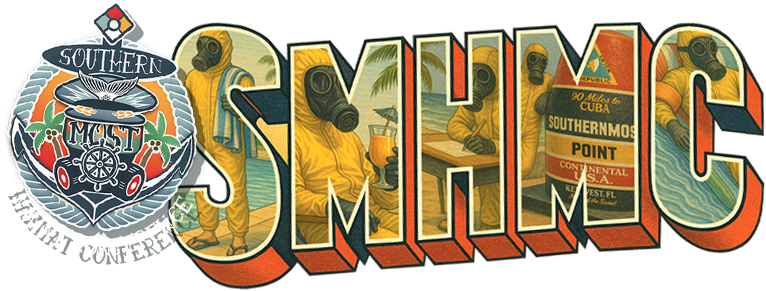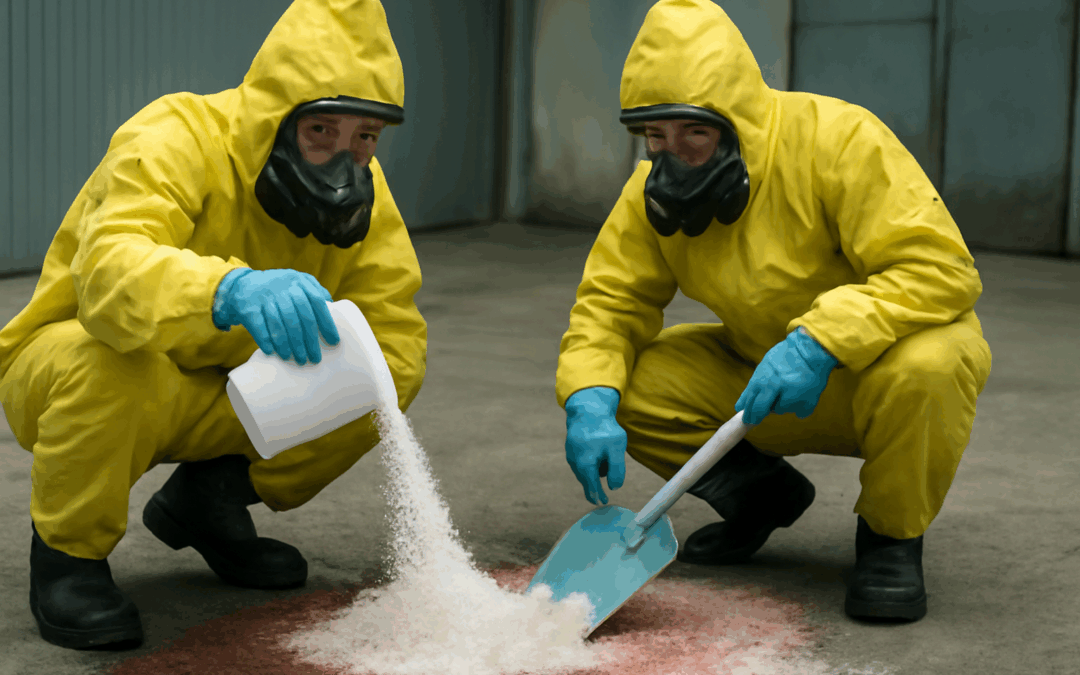Rethinking Hazmat Response: A Real Talk on Neutralization and Risk-Based Decisions
As someone who’s spent a good bit of time with hazmat technicians, I’ve heard all the rules. And if you’ve trained in this world, you’ve likely memorized them too. But what happens when the “never-ever” rules start to bump up against real-world situations?
I sat down with Bobby Salvesen and Mike Monaco – The Haz Mat Guys – for a frank conversation about what happens on actual calls, not just what’s in the training manual. This episode was different. It wasn’t scripted. It was a back-and-forth, push-and-pull between two seasoned hazmat instructors who’ve seen more acid spills and garbage truck incidents than most of us would care to imagine.
Why This Episode Matters
This wasn’t just a chat about chemicals. It was about culture. About how responders are taught, and how that teaching evolves – or sometimes doesn’t – as people gain experience. Bobby and Mike touched on everything from “normalization of deviance” to misunderstood chemistry, and how these can affect the safety and effectiveness of a hazmat response.
It started with a text Mike got from a friend in Arizona: “Shelter in place.” That quickly escalated into a real situation involving fuming nitric acid. It set the tone for a deeper discussion: how do we respond to incidents when the chemical identity is unknown, and the rulebook offers little room for nuance?
Garbage Trucks, pH Strips, and Red Buckets
Mike asked Bobby to walk through a common scenario: a sanitation worker gets splashed by a corrosive in the back of a garbage truck. It’s one of those situations that’s frustratingly vague – 20 to 30 gallons of liquid, burning, maybe acidic, maybe basic.
Bobby’s first steps? pH strips, flammability metering, eyes wide open. Anyone who’s ever tested runoff from a garbage truck knows: you’re usually dealing with both an acid and a base. “Left side’s acid, right side’s base,” Bobby joked – but with truth behind it.
Now here’s where it got interesting: Bobby uses a simple shorthand for communicating in the field – “red” for acid, “blue” for base. Need to neutralize? “Call for a bucket of blue.” It may sound almost cartoonish, but it’s about removing guesswork. In a chaotic scene, plain language saves time and prevents mistakes.
Slurry vs. Direct Neutralization: A Touchy Subject
Mike wasn’t afraid to challenge what many in the hazmat community treat as sacred: always use a slurry, never directly mix strong acids and bases. It’s been drilled into technicians forever. But is it always necessary?
“I feel like we should be able to have the option to do it,” Mike said. And this is where the conversation turned into a respectful – but spirited – debate.
Bobby, on the other hand, stuck closer to conventional wisdom. “Neutralization is third on my list,” he said. First, contain it. Then absorb it. Only then, maybe, neutralize it.
The heart of their argument revolved around this: Is it ever okay to apply dry acid directly onto a base – or vice versa – if done slowly, carefully, and with full awareness of the risks?
Mike said yes – if you approach it like titration, adding just a grain at a time, observing each reaction, staying in control. No buckets being dumped. No rogue “cowboy” moves. Bobby didn’t say no – but he did stress how quickly responders can lose patience and dump the whole scoop in. And that’s when things go sideways.
The Chemistry Behind It
Strong acids and bases reacting together release heat, gas, and a salt. The heat (delta T) can spike quickly. That’s why, in chemistry class, we’re taught to always add acid to water – never the other way around – because water helps absorb that heat. That’s the principle behind the slurry method: water acts as a thermal buffer.
But Mike argued that not every real-world situation lets you add volume. “Sometimes the puddle is right up against a storm drain,” he explained. You can’t afford for it to grow while you wait for the slurry to work. That’s where knowing how to apply small, measured doses of neutralizer directly – using judgment and observation – can be useful.
The Real Risk: Human Error
This wasn’t a conversation about chemicals. It was about people.
“We have to teach the lowest common denominator,” Bobby pointed out. And he’s right. Hazmat is a team sport. You might understand titration, but the next responder might just hear “put in the blue stuff.” That’s where things get dangerous.
Bobby referenced a powerful concept: normalization of deviance. It’s the slow drift away from standards because “nothing bad ever happens.” Until it does. It happened with the Challenger disaster, and it happens in hazmat – when shortcuts become habits, and habits become norms.
Mike didn’t argue that point. Instead, he framed his approach as one for “the A-team” – those who understand the chemistry, who know when they’re stepping outside the box, and how to do it safely. His point wasn’t to tell everyone to abandon slurries. It was to acknowledge that responders often find themselves without perfect tools, and they need to be trained for that reality.
Practical Advice from the Field
So what does all this mean for hazmat teams?
- Train like you respond: Scenarios should include titration-style neutralization, not just the slurry default. Give responders a chance to practice nuanced decisions.
- Watch the volume: Sometimes, adding water makes things worse. Don’t be afraid to talk about volume control as part of your neutralization strategy.
- Teach for comprehension, not compliance: Rules matter – but so does understanding why the rule exists. If someone’s going to bend it, they’d better know what they’re doing.
- Use clear communication: Shorthand like “red” and “blue” may sound simplistic, but in the field, it’s often what prevents mistakes.
Final Thoughts
This episode wasn’t about rewriting the rulebook. It was about understanding when it’s okay to color outside the lines – if you have the training, experience, and situational awareness to do it safely.
“Everyone wants to be on the hazmat team – until it’s time to do hazmat things,” Bobby said.
Mike and Bobby’s conversation showed that doing “hazmat things” well means more than following checklists. It means understanding the why behind your actions, reading the scene, knowing your chemistry – and your people – and making smart decisions when the plan doesn’t quite fit.


